Improve Your Busiest Season With These 6 Essential Benchmarks of a 2025 Holiday Ecommerce Strategy

Here’s the guiding principle of your 2025 holiday ecommerce strategy: smart deals.
Let’s break that down.
“Deals” because holiday shoppers are searching harder than ever for the best ones. PwC predicts in their 2025 Holiday Outlook survey that “almost 80% of holiday gift budgets will have been spent by the end of Cyber Monday.” That’s typically the most deal-heavy weekend of the holidays.
“Smart” because ecommerce businesses like yours can’t sacrifice (too much) profitability to offer deals. You must offer them strategically without losing sight of the customers who are happy to purchase without a deal.
With such an emphasis on deals, it’s no surprise the same survey showed that consumers expect to spend 5% less during the 2025 holidays than in 2024.
Given these trends, you can’t rely on your 2024 holiday ecommerce strategy. In what follows, we’ll lay out the benchmarks of a profitable strategy for the upcoming holiday season, complete with tactics.
#1: Optimize your ecommerce store for generative AI chatbots
Your 2021 holiday ecommerce strategy probably included optimizing your online store for Google Search and Google Shopping. Now you need to optimize it for generative AI tools like ChatGPT and Google AI Overviews.
Many consumers are bypassing Google altogether. According to a 2025 consumer trends study from consulting firm Capgemini, “Nearly 60% of consumers have already replaced traditional search engines with Gen AI tools for product recommendations.”
Here’s a sample ChatGPT query: “I'm looking for a blue waterproof speaker that floats. I don't want to spend more than $250. I want to buy it online. What are my options?” ChatGPT neatly summarizes the results and includes links to the online stores selling the speakers.
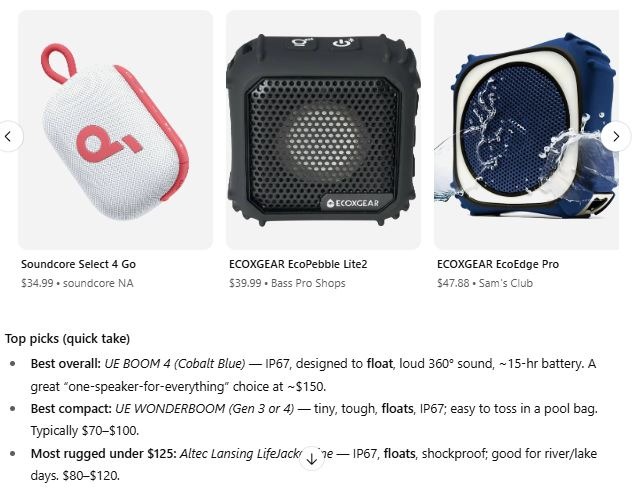
Turn on ChatGPT’s Crawler
ChatGPT, among other AI chatbots, will have difficulty accessing your product content unless you structure it in a certain way. But first you need to allow ChatGPT to crawl your product data. Include this information in your robots.txt file, which controls the data crawlers can access:
- User-agent: GPTBot
- Disallow: /
- Allow: /products/
- Allow: /collections/
Once you’ve updated this file, prepare your product data for AI discovery.
Audit schema attributes
Schema attributes are identifiers you connect with product content using JSON-LD (JavaScript Object Notation for Linked Data). Here are some identifiers to have your site developer include in your product data pages, courtesy of ChatGPT itself:
- Product identification: name, description, image, sku, brand, gtin*/mpn, url
- Commerce: priceCurrency, availability, itemCondition, priceValidUntil, acceptedPaymentMethod, sale_price
- Product enhancers: shippingDetails (rates, regions, delivery times), hasMerchantReturnPolicy (country, window, fees/method), aggregateRating, review
- Product variants: ProductGroup (productGroupID, variesBy, hasVariant), per-variant isVariantOf
- Product specs: color, size, sizeSystem, sizeGroup, material, additionalProperty, energyConsumptionDetails (where relevant)
And yes, for deals, sale_price is a commerce attribute ChatGPT recognizes, as well.
Rewrite product descriptions for generative AI
The more you align your product descriptions to answer questions customers want to ask, the more generative AI chatbots will notice your content.
First, look at your current product reviews, from all platforms that contain them (your website, Reddit, and other social media). What do customers highlight? If reviews mention “floats,” “easy to assemble,” or “very durable,” your descriptions should include these terms.
Here is the product description of a speaker included in the AI-provided recommendations:
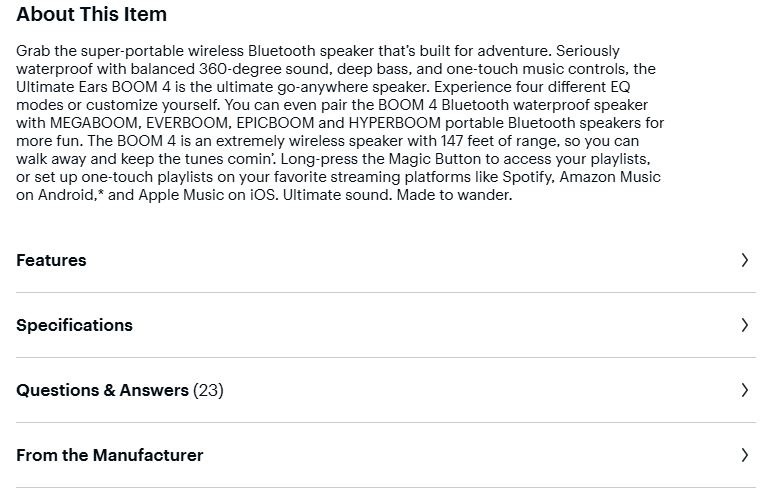
Second, include information on your product pages that build customer trust. Many shoppers will hesitate to click “Buy” unless they know your return policies, warranty details, and shipping fees. Include these items on your product description pages (PDPs) and especially in your site’s structured data.
Enable ChatGPT UTM tracking in GA4
All outbound links from ChatGPT include “utm_source=chatgpt.com.” Build filters in GA4 to track inbound traffic from these links. If you implement the preceding steps correctly, you should see traffic slowly grow from these sources.
Finally, if you’re reading this in October or November, it’s likely too late for this piece of your holiday strategy to have any impact by Black Friday this year. But you should start preparing now for next year.
Optimizing your store for generative AI is about to become even more urgent. In September 2025, OpenAI announced that shoppers will soon be able to purchase items from Shopify-powered ecommerce brands within chat.
#2: Partner with a Buy Now, Pay Later (BNPL) provider
BNPL can significantly increase shoppers’ willingness to purchase from you, as well as their average order values (AOVs).
According to a 2024 Harvard Business Review study, “Consumers who adopted BNPL were more likely to purchase, with purchase likelihood increasing from 17% to 26%.” Plus “their basket sizes were 10% larger on average than they were before the introduction of BNPL.”
The previous year, 2023, PYMNTS Intelligence found the “average holiday shopper spent roughly $533 on Black Friday, with those using pay later options spending 48% more on their holiday shopping than those using other methods.”
Suppose a customer wants to purchase a $1,000 wooden coffee table, marked down to $789 for Cyber Monday. Companies like Affirm, Klarna, and Afterpay let customers pay for the table in even, interest-free installments.
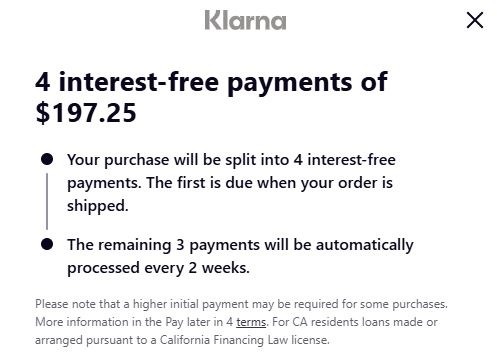
The knowledge that they only have to pay $197.25 up front may make customers feel like they’re getting an even better deal than the discounted price alone.
#3: Increase the value of loyalty points from Black Friday to Cyber Monday
You already have your Black Friday deals lined up — but so does your competition. Instead of competing on price alone, why not add customer value by making your loyalty points worth more during the holiday shopping season?
Many shoppers prefer brands and retailers with loyalty programs. In its 2024 holiday trends report, Salesforce revealed that, “46% of shoppers say earning and redeeming loyalty points is the second highest factor, behind price, influencing where they buy.”
Competing on price can quickly become a race to the bottom for online retailers. This tactic could end up proving more costly than increasing the value of loyalty points for a limited time. In addition, you’ll give loyalty members a sense of urgency about using their rewards and attract new members if you promote the temporary upgrade with a well-timed pop-up.
Apps like Yotpo seamlessly integrate a points-based loyalty program with your ecommerce site. Show customers how to earn and redeem points, and display a participant’s point totals at checkout to encourage redemption.

For example, from your Yotpo account dashboard, you can modify the value of points and how to earn them. During the all-important four shopping weeks leading up to Christmas, you can make a point worth $1.50 instead of $1. Also, consider making each dollar spent worth two points, not one. Alert your email lists before the promotion goes live.
#4: Offer customer-specific returns and exchanges
Online shoppers want free returns to the point that one in three of them “find paying for return shipping more annoying than jury duty and going to the DMV.”
But in December 2024, retailers estimated that customers would return 16.9% of their 2024 annual sales, to the tune of $890 billion, suggesting that free returns across the board are no longer an option for most retailers.
Reserve free returns for high LTV customers.
The Vitamin Shoppe, like many online stores, offers free shipping on purchases totaling a specific dollar amount: $35 or more. Why not apply this strategy to return fees?
Consider requiring shoppers to spend a certain amount upfront to qualify for free returns. You’ll likely increase AOV and defend your margins against return costs. You can apply this strategy in a few ways:
- Require a minimum spend for free returns during the holiday season only, when returns are likely to peak.
- Make free returns a benefit for loyalty program members who spend at a certain level. Given how much shoppers hate paying for return shipping, you might encourage many of them to join your loyalty program.
If customers resist spending more to get free returns, consider offering them a free return if they opt for a store credit instead. Fashion retailer Everlane has adopted this tactic.
These customers will feel like they’re getting a deal, even if they’re not necessarily searching for one.
Set up return fraud guardrails.
Obviously, fraudsters should have zero access to any and all return privileges. But it’s not getting any easier to stop them. According to a 2024 report from the National Retail Federation, “A majority (93%) of retailers said retail fraud and other exploitative behavior is a significant issue for their business.”
Sure, you can inspect returns manually, and this can help you catch fraudsters who send back empty or artificially weighted boxes, as well as obviously worn apparel. Over time, unfortunately, the labor involved will likely kill your growth.
Automated fraud detection is essential, especially when the volume of orders and returns jumps during the holidays. Technology partners like Extend can serve as your ecommerce store’s return hub. Our fraud guardrails start with a data validation process that recognizes and flags falsified images, fake names, email addresses, and phone numbers.
Combine these guardrails with custom return triggers you set, and Extend assigns risk scores to each attempted return. That frees you up to:
- Send a returner with a moderate risk score a store credit, not a refund.
- Maintain your policy of giving customers with high LTV a free return on one of their holiday orders.
- Block returners with high risk scores from completing a return.
With Extend, you can manage returns in a cost-effective way without alienating your best customers.
#5: Design a post-purchase experience that preserves revenue
Given the enormous bite that fraudulent (and some legitimate) returns can take out of your bottom line, you must have a strategy in place to preserve revenue after the sale.
Offer shipping protection to mitigate porch piracy.
Much can happen between the time a consumer clicks “Buy” and the time the package arrives at their doorstep. A package can get lost or damaged during transit, and even stolen from the consumer’s doorstep.
According to a 2024 ValuePenguin study, “one in 4 (25%) [Americans] had [a package] stolen in the past year.” During the 2023 holiday season alone, “more than 1 in 10 Americans (11%) say they had a package stolen … That rate jumps to 18% among Gen Zers.”
Porch piracy, or any kind of loss during transit, can ruin a holiday for the gift giver. The giver will need to scramble to get a replacement and risk letting down the gift recipient.
Extend Shipping Protection gives shoppers a fast and convenient way to reclaim a lost or stolen gift. Customers can add protection during the checkout process.
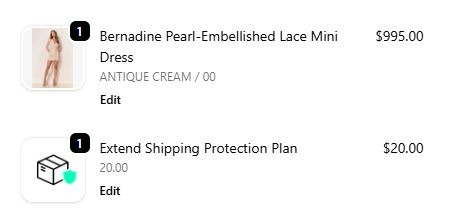
For approved claims, victims of package loss receive a replacement at no additional cost. Plus you, the merchant, don’t have to deal with the hassle of replacing a lost item. Everyone wins.
Make product protection available to safeguard fragile, expensive items.
Suppose a customer orders a portable speaker as a holiday gift for a friend who’s been talking about it all year. It arrives undamaged and on time, but the friend’s toddler accidentally drops it two days after Christmas, breaking it.
If the merchant selling the speaker had also offered Extend Product Protection, this disappointing situation could have had a much happier ending. For a modest fee at checkout — and pending claim approval — Extend could have replaced or repaired the speaker at no additional cost to the gift giver or recipient.

When faced with shelling out another $150 for a replacement speaker, paying a bit more at checkout for Product Protection is likely worth it to the consumer. In other words: it feels like a deal.
#6: Lock in the marketing calendar and finalize communications
With the above tactics in place, the final piece of your holiday ecommerce strategy is scheduling your email marketing, SMS, and on-site messaging.
Pre-Black Friday and Cyber Monday
Schedule these communications for the beginning of the second week of November to the day before Thanksgiving.
This time period gives you the opportunity to launch teasers of your deals to your list. It’s also the perfect opportunity to announce early access to loyalty program members and other top customers.
For example, let loyalty program members know that points have double their value on the Wednesday before Thanksgiving only. Create a dedicated landing page containing early deals just for them.
Thanksgiving through the week before Christmas
While not all your holiday ecommerce sales need to revolve around deals, there are several ways to make your limited-time offers more enticing.
Weave discounts into bundled items.
Product bundling isn’t a new tactic for boosting average order value while protecting margins. But its role in your holiday marketing efforts should expand as shoppers try to make the most of every dollar spent.
Many shoppers might sacrifice desired experiences in order to purchase physical gifts for family and friends. Depending on your vertical, you can position select bundles as “bringing [insert type of experience] home.”
A great example is the spa industry. Going to the spa can be expensive, but with so many retail spa products available, these make perfect sense for an experiential bundle.
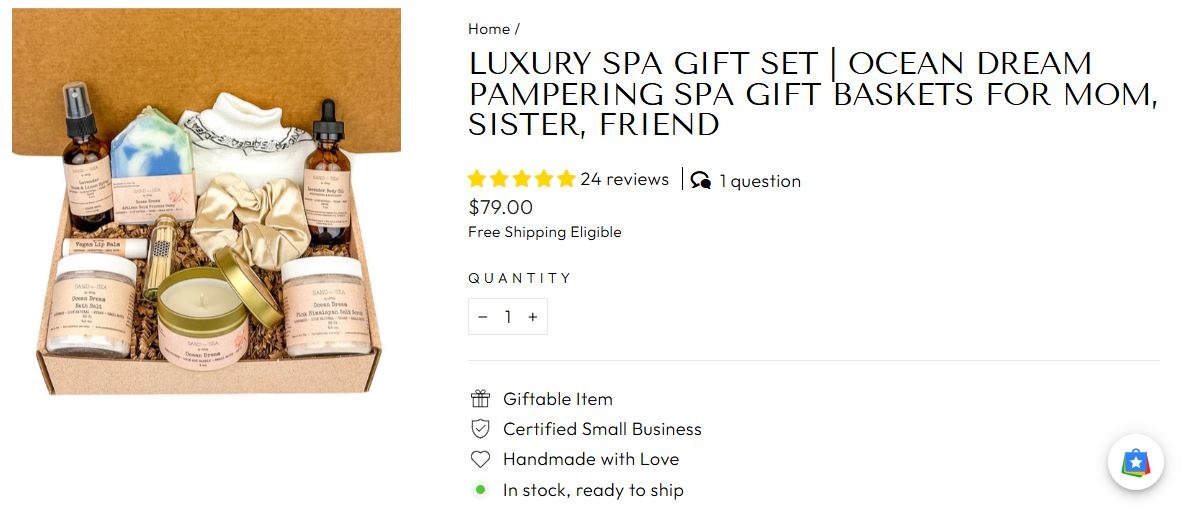
List what the products would cost individually as well as how much you discount them in the bundle. You’ll satisfy shoppers looking for a deal and those who don’t have time to scan dozens of similar items to find the right one.
Offer special “social media only” deals with influencer help.
If your brand enjoys strong levels of engagement on social media platforms, lock and load TikTok- and Instagram-specific Cyber Week deals. Both channels have dedicated “social shopping” features.
Consumers are buying increasingly through social commerce. Capgemini, in its 2025 study of consumer trends, states, “The share of consumers purchasing new products or brands through social media increased from 24% in late 2023 to 32% in late 2024.”
You can even position the offers as expiring in 24 hours to boost conversion rates.
Remind buyers to purchase shipping and/or product protection.
Suppose you offer shipping and/or product protection, and a customer purchases a stereo online. If they did not purchase shipping protection, send an email encouraging them to purchase it before the item ships out.
When the buyer sees the small price tag of shipping protection next to the out-of-pocket replacement cost, they might consider shipping protection a bargain.
Week before Christmas
By this time, the ground shipping window will likely have closed. If you have a network of physical stores, cater to shoppers who can’t or don’t want to pay for expedited shipping with buy online, pick up in-store (BOPIS)-related offers.
In 2024, curbside pickup (BOPIS) peaked on Dec. 23, “accounting for 37.8% of online orders that day.” This is a slice of revenue you don’t want to lose.
Tag appropriate online items with a “Pick up today in-store” badge, and send offers via email or SMS to customers with ZIP codes near your stores. Before you launch the promotion, have the following in place:
- Increase staffing to handle the influx of customers.
- Align online inventory with in-store inventories so customers don’t arrive at the store and find their items unavailable.
- Post additional in-store promotions to encourage shoppers to buy more than what they purchased online.
Now your BOPIS offers are much less likely to damage brand loyalty.
Christmas Eve and Christmas Day
E-gift cards are the perfect last-minute gift. Send your email list dedicated messages on Christmas Eve and/or Christmas Day announcing their availability. Increase the purchasing power of these e-gift cards, adding five dollars of value to each one. For example, a $60 card would retail for $55.
Empower your holiday ecommerce strategy with smart deals and Extend
The 2025 holiday season will be defined by shoppers chasing deals while merchants protect profitability.
Brands that exceed 2024’s holiday revenue won’t just slash prices. They’ll use tools like generative AI optimization, flexible payments, loyalty incentives, and smarter post-purchase experiences to create value without eroding margins.
Solutions such as Extend Shipping and Product Protection not only protect revenue but improve the post-purchase customer experience.
In short: the retailers who thrive this season will be those who deliver smart deals that delight shoppers, defend profits, and build loyalty well beyond the end of the year.
To learn more how Extend’s powerful tools can help you increase your holiday sales, click here to schedule a free demo.
Updated on October 15, 2025.
Aaron Sullivan is senior content marketing manager at Extend. He specializes in writing about e-commerce, finance, entertainment, and beer.
.svg)































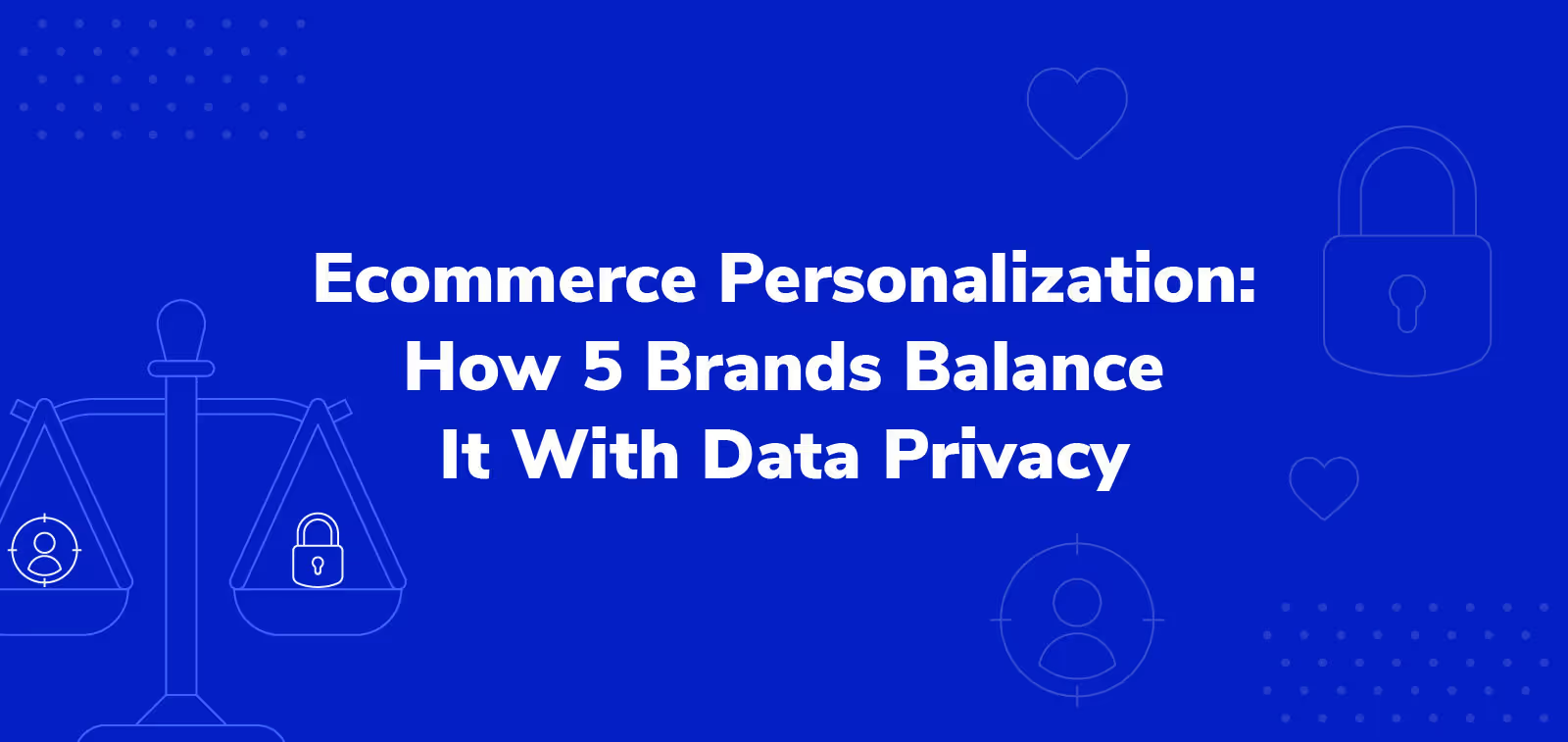













.avif)











